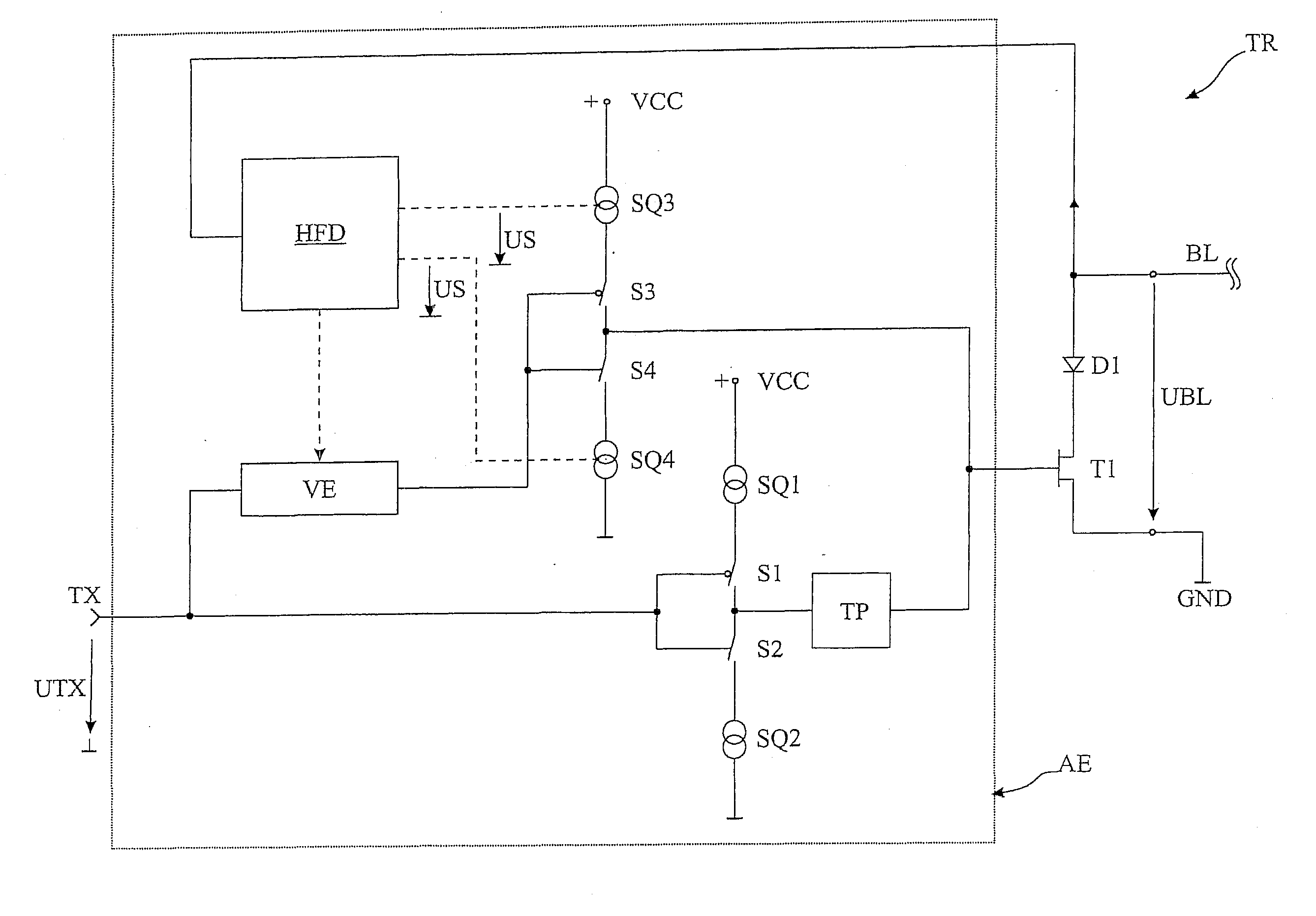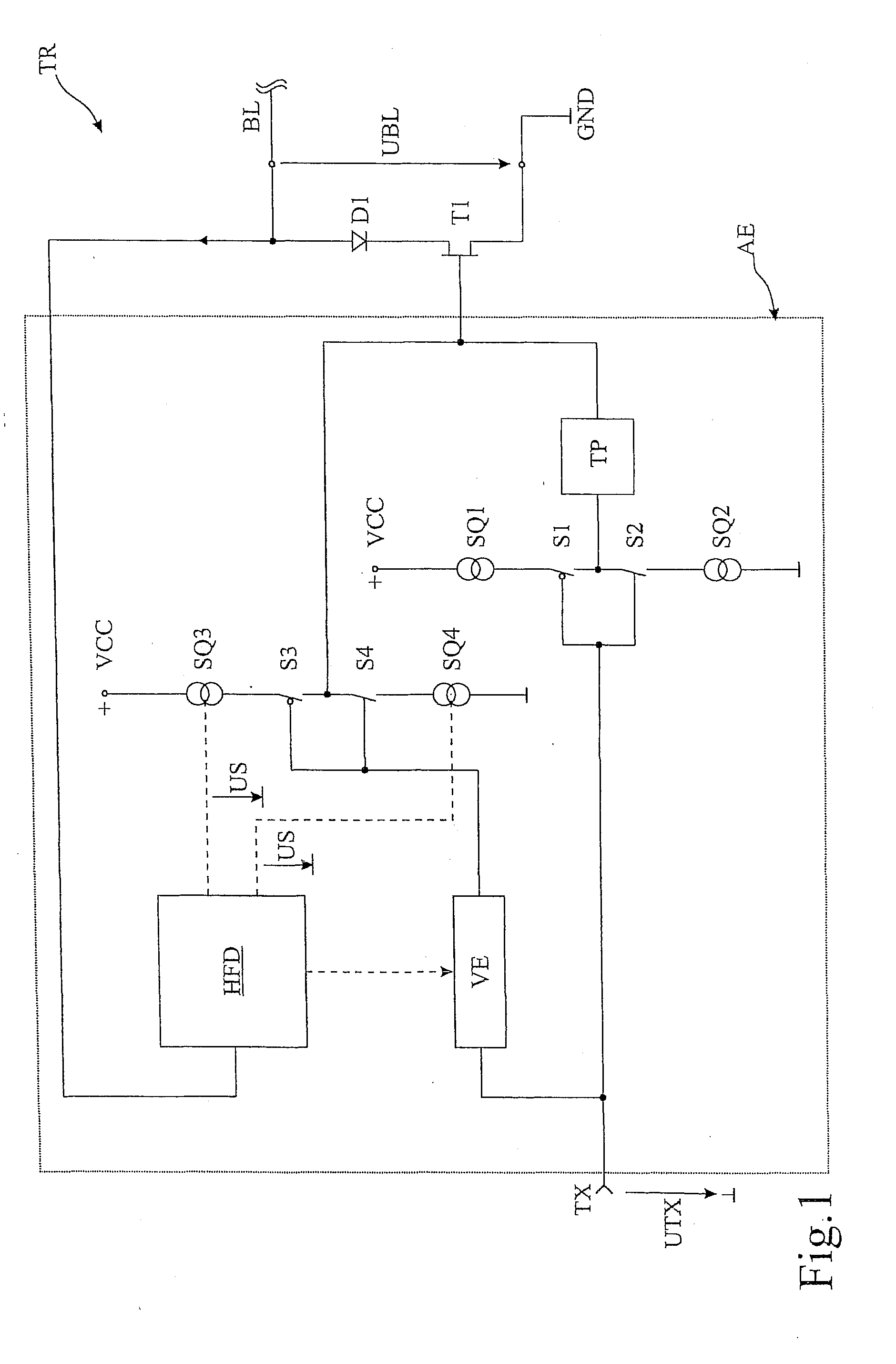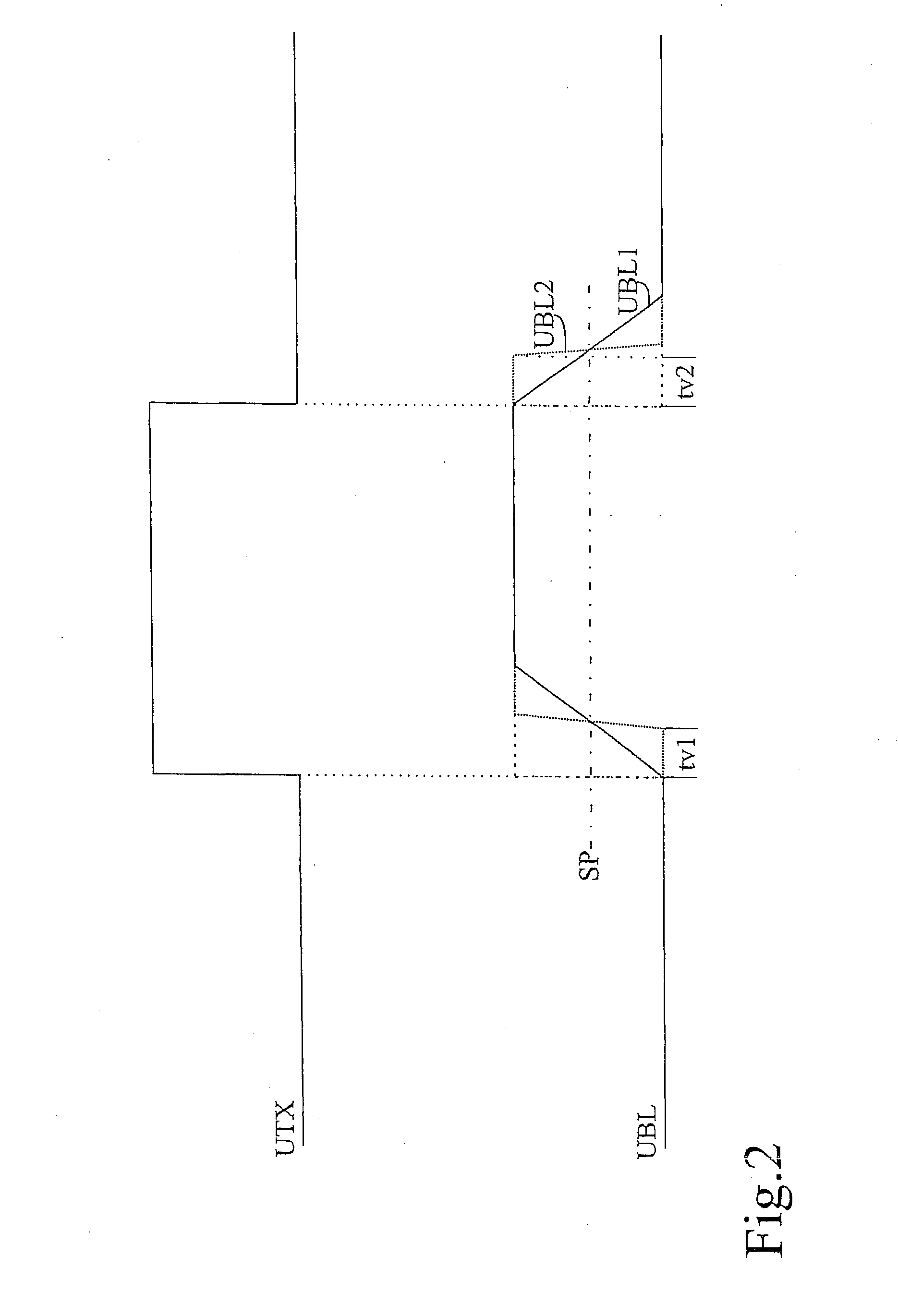Method for edge formation of signals and transmitter/receiver component for a bus system
a bus system and transmitter/receiver technology, applied in the direction of line-faulst/interference reduction, amplitude demodulation, pulse technique, etc., can solve the problem of increasing the steepness of the edge continuously with increasing the hf interference level, and achieve high bus system interference immunity
- Summary
- Abstract
- Description
- Claims
- Application Information
AI Technical Summary
Benefits of technology
Problems solved by technology
Method used
Image
Examples
Embodiment Construction
[0025]FIG. 1 shows a circuit diagram of a transmitter / receiver component TR for a LIN bus system. The transmitter / receiver component TR comprises a MOS driver transistor T1, which is looped in a conventional manner in series with an inverse-polarity protection diode D1 between a bus line BL of the bus system and a reference potential GND and which is used to output signals on the bus line BL. Apart from the shown elements D1 and T1, still further elements, which are not shown, may be present if they are necessary. Reference is made here also to the LIN bus specification and to the relevant literature.
[0026]In the shown transmitter / receiver component TR, for reasons of clarity, only the transmit path of the invention is shown. The receive path can be implemented in a conventional way.
[0027]The transmitter / receiver component TR comprises an input terminal TX to which, for example, a port of a microcontroller (not shown) is connected. The signals applied at input terminal TX are output...
PUM
 Login to View More
Login to View More Abstract
Description
Claims
Application Information
 Login to View More
Login to View More - R&D
- Intellectual Property
- Life Sciences
- Materials
- Tech Scout
- Unparalleled Data Quality
- Higher Quality Content
- 60% Fewer Hallucinations
Browse by: Latest US Patents, China's latest patents, Technical Efficacy Thesaurus, Application Domain, Technology Topic, Popular Technical Reports.
© 2025 PatSnap. All rights reserved.Legal|Privacy policy|Modern Slavery Act Transparency Statement|Sitemap|About US| Contact US: help@patsnap.com



